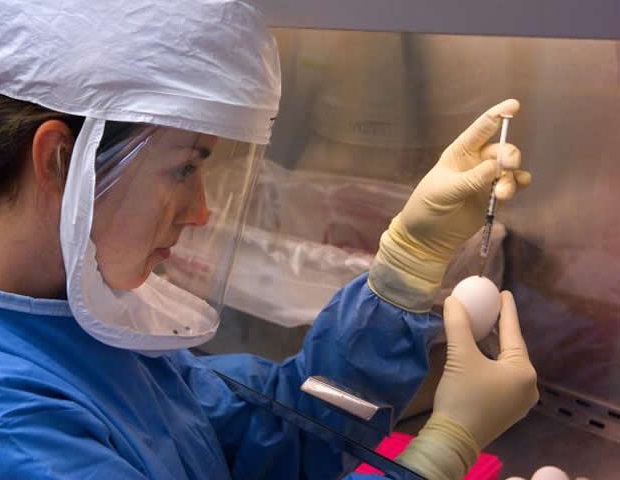Dental opioid prescribing declines in the U.S., but pandemic slows progressNovember 3, 2023
 Reviewed
ReviewedAmericans who have a tooth pulled or another painful dental procedure in the United States today are far less likely to get opioid painkillers than they were just a few years ago, a University of Michigan study shows.
That’s good news, since research shows that opioids are not necessary for most dental procedures.
But the COVID-19 pandemic seems to have thrown a wrench into the effort to reduce opioid use in dental care—and not just in the few months after dentists and oral surgeons started providing routine care again after a pause in spring 2020.
The decline in opioid prescriptions filled by dental patients was much faster in the pre-pandemic years 2016 through 2019, compared with the rate of decline from June 2020 to December 2022, the study shows.
In all, dental opioids dispensed to U.S. patients of all ages declined 45% from 2016 to the end of 2022, according to the new findings published in PLOS ONE. But even with the decline, 7.4 million dental patients of all ages filled opioid prescriptions in 2022.
Fortunately, opioid prescriptions to teens and young adults—who face especially high risks related to opioids—kept declining at a rapid rate after the pandemic pause in dental care, the study finds. But for other groups, the rate of decline slowed after June 2020.
In all, the researchers estimate, 6.1 million more dental opioid prescriptions were dispensed between June 2020 and December 2022 than would have been if pre-pandemic trends had continued. And American dentists and oral surgeons were still prescribing opioids in late 2022 at four times the rate that another study showed British dentists were in 2016.
These data suggest the dental profession has made major strides in reducing opioid prescribing, but also suggest that progress is slowing.”
Kao-Ping Chua, senior author of the new study and U-M assistant professor of pediatrics and public health
Study co-author Romesh Nalliah, professor and associate dean for clinical affairs at the U-M School of Dentistry, says that dental pain in most patients can be controlled with nonopioid medications, avoiding the risks of opioids.
“While it’s reassuring that dental opioid prescribing is declining, the recent slowing in the decline suggests the dental profession must redouble its efforts to reduce unnecessary opioid prescribing,” he said.
The researchers couldn’t determine the procedure that led to each opioid prescription, nor could they determine the exact reason for the slowing of the decline in dental opioid prescribing during the pandemic. However, there are some likely culprits.
“One reason for the slowing might be that dentists were more likely to prescribe opioids just in case they were necessary, out of concerns that patients couldn’t easily follow up with their dentist during the pandemic,” said Jason Zhang, study first author and former U-M research assistant.
Chua, Nalliah and their colleagues have studied dental opioid prescribing multiple times, and worked with the Michigan Opioid Prescribing Engagement Network (OPEN) to develop prescribing guidelines for dental and oral surgery care.
Reducing the number of opioids dispensed to dental patients, especially young ones, is thought to reduce the risk of opioid misuse and diversion of pills to other people besides the patient. Poisoning of others in the household, and interactions between opioids and other substances including alcohol and prescription drugs, are other reasons to focus on nonopioid dental pain care.
The U-M study revealed pandemic-associated changes in dental opioid prescribing varied widely. For instance, the rate of decline in opioid prescribing by oral and maxillofacial surgeons—who perform more complex procedures on people with advanced dental conditions—slowed during the pandemic to a lesser degree than for general dentists and dental subspecialists.
For low-income patients covered by Medicaid, the number of dental opioid prescriptions during June 2020-December 2022 was 57% higher than predicted than if pre-pandemic trends had continued. For privately insured patients, this percentage was 30% higher than predicted.
The authors speculated that worsened access to dental care in Medicaid patients—who already have poor access to begin with—may have increased the number of painful dental emergencies and the need for opioids.
Other study co-authors included: OPEN co-directors Jennifer Waljee and Chad Brummett, who also co-directs the U-M Opioid Research Institute.
University of Michigan
Zhang, J., et al. (2023). Association between the COVID-19 outbreak and opioid prescribing by U.S. dentists. PLOS ONE. doi.org/10.1371/journal.pone.0293621.
Posted in: Medical Research News | Healthcare News | Pharmaceutical News
Tags: Alcohol, covid-19, Dentistry, Drugs, Maxillofacial, Medicaid, Opioids, Pain, Pandemic, Pediatrics, Poisoning, Public Health, Research, Surgery
